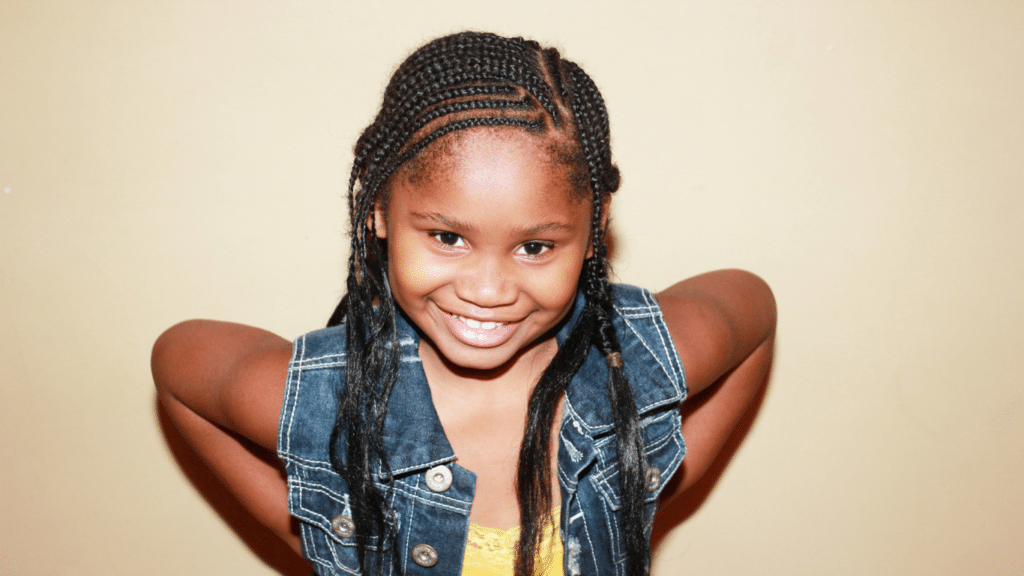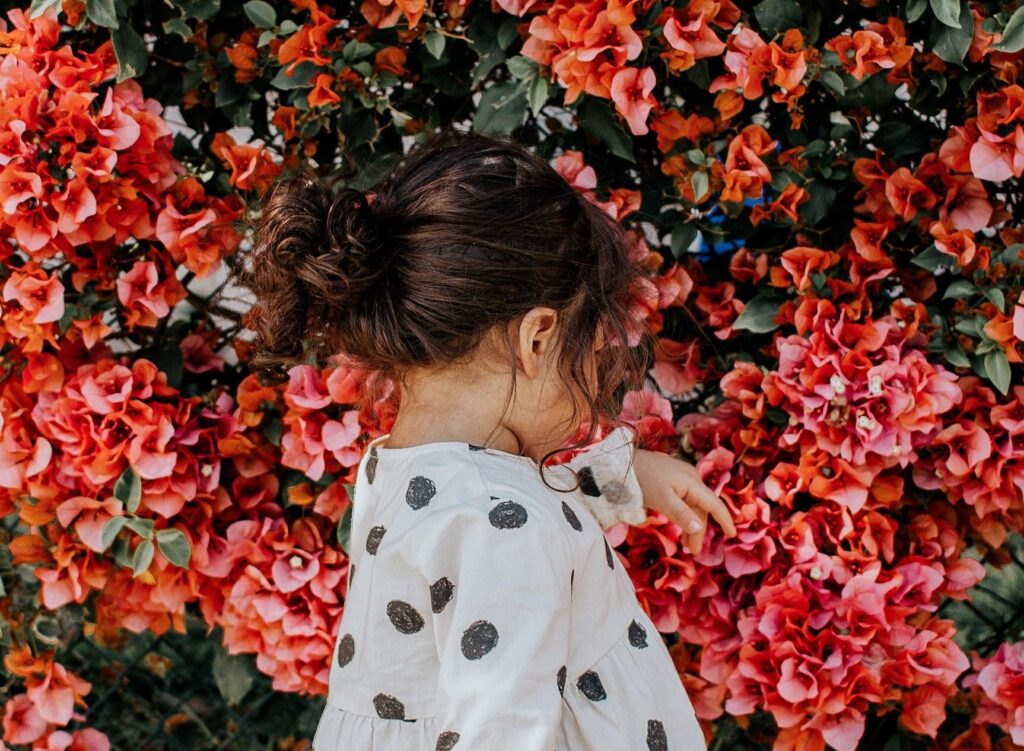When Kelly Martin brought home her 21-month-old daughter, Kendall, there were all the common new-parent concerns: “How will I ever cut such tiny nails?” laughs Kelly. But Kendall is Haitian, and caring for black skin and hair was to be an additional learning experience for Kelly. Undaunted, she says, “I knew it was something I would have to learn.”
Like Kelly, many non-black parents who adopt a black child are learning that their ideas of basic skin and hair care simply don’t work for black or bi-racial children, and trying to use the same products and styling techniques with them can actually result in harm, such as dry, irritated skin, hair breakage, and even hair loss.
Skin – A delicate matter
Black skin is delicate and needs to be treated with care to avoid developing dark spots and scars.
For children and teens, Birgit Okoth of Abantu Beauty Products in Burnaby advises that the face and neck be washed using a mild cleanser and barely warm water. Cocoa butter in a cleanser will help preserve the skin’s natural oils, and cleansers containing sulfur can help to prevent dark spots on the skin. If you’re concerned about selecting products for a baby, ask for assistance. Black skin is generally very dry, and without proper moisturizer, may develop an ashy appearance. Birgit suggests applying a moisturizer immediately after bathing. Mother Yvonne Devitt suggests using Vaseline Creamy and says it works well.
Yvonne also suggests using bedtime as skin care time because it not only creates a great routine for your child, but also allows for some warm touch time together as you massage lotion into their skin.
Remind your child not to pick at scabs or squeeze pimples, as this can result in permanent dark spots. Acne, if left untreated, can do the same.
Some children of darker skinned races can develop Mongolian spots. These are flat, pigmented lesions with nebulous borders and irregular shapes. They may look like bruises, and they tend to appear at the base of the spine, as well as on the buttocks and back. They can, however, appear on other areas of the body. Mongolian spots are not a cause for concern. They are benign skin markings, and there is no treatment required. They generally fade over time and disappear by adolescence.
There is a misconception held by some that people with dark skin have a natural defense against the sun’s damaging rays. While darker skin does provide some natural protection, like any skin it can burn. Birgit suggests using a sunscreen with an SPF rating of 15 or higher.
Developing a hair routine
Ensuring proper attention is paid to hair care and styling will help your child to feel more self-confident. Some parents of multiracial families with black or biracial children report that a great deal of pressure in this area falls on them. They find that their parenting skills are often judged by their ability to care for and style their child’s hair and that the pressure and scrutiny from others is strong.
Learning to style your child’s hair is certainly a cost-saving measure when you consider that having a professional put in cornrows will cost approximately $40 – $50, braiding approximately $60 – $75, and extensions approximately $100 – $200. If you’re doing the styling yourself, however, be prepared to save lots of money but spend lots of time. Some parents estimate that they’re spending four to six hours a week on hair care for each child. Many boys, and some girls, will be happy to keep their hair clipped short, which greatly reduces the time requirement. Whether you have boys or girls, the styling tips and techniques for long hair are the same.
Black hair and the ways in which it is worn are a significant part of black culture. By helping your child in styling and caring for their hair, you can help them to connect with, and take pride in, that part of their cultural heritage.
Though you may find yourself becoming frustrated during the process of learning what’s right for your child’s hair, it’s important to speak positively about their hair as it is a part of who they are and should be something that they can take pride in. There’s no need to try to “fix” their hair. It’s as unique and beautiful as your child. Instilling this sense of pride and confidence in your child around the issue of their hair can help to prepare them to deal with others’ questions, curiosity, and sometimes less than polite comments.
Because the texture and curl of black hair is unique, people are often curious and may even touch someone’s hair without permission. This is inappropriate as we are each entitled to set the boundaries of our own personal space. Children should not be made to feel obligated to allow people—children or adults—to touch their hair without permission. Yvonne suggests that parents can deal with this by saying something like, “My child isn’t crazy about being touched by strangers; I’m sure you understand.” But you can encourage your toddler or older child to simply say, “No thank you,” or, “Please don’t,” if they feel uncomfortable.
Kandace Wood, adoptive mother of two Haitian children — a son, aged five, and a daughter, aged three — says that for their family, finding the best ways to care for black hair came through a good deal of trial and error. And while plenty of people are quick to offer advice, Kandace says, “Every expert you talk to has their own opinion.” And Kandace makes a good point that though one product may work wonders for one child, it may not be right for another. She points out that “bi-racial hair is not as tightly curled as black hair,” so that is something to keep in mind as well. A hair-care tip that has proved invaluable for their family is to use a bit of bees’ wax when braiding.
Vaseline was long considered to be a useful product primarily because, in the past, there wasn’t much else available. Unfortunately, Vaseline is generally too heavy and attracts dirt and dust. This builds up on the hair causing lint balls, which can cause embarrassment for your child. There are many products available that are specially designed for black hair. If you’re having difficulty finding an appropriate product, speak to a professional hair stylist who works with black hair.
Products aside, it’s important to know that black hair needn’t be shampooed daily. In fact, once a week should be sufficient; however, the hair can be rinsed with water as often as is necessary.
To shampoo, rinse the hair, and shampoo into the scalp with your fingertips, working toward the ends of the hair. Be careful not to rub the hair into knots with the palms of your hands. Rinse the hair well, apply conditioner, and comb through before rinsing again thoroughly. Of course, there’s no need to rinse if you’re using a leave-in conditioner. Your next steps will depend on the style you’ve planned, and there are plenty of books and magazines to provide you with ideas; see our book list to get started.
Yvonne provides some tips for braiding your child’s hair. She says, “It’s all about nice clean part-lines.” She suggests:
- Make a part-line down the middle first.
- Split each side into quarters, then into smaller sections.
- Use soft elastics and snip them out with small scissors rather than pulling and breaking the hair.
- The more braids you do, the longer the hairstyle will last.
- A little spray-gel will also help the style to last.
- To maintain a hairstyle longer, have your child wear a satin nightcap or pillowcase as this allows the hair to slide across the pillow’s surface rather than snag, as it would with another type of fabric.
- When restyling, use a spray bottle containing half conditioner and half warm water to wet the hair so you can comb it out.
- Other ways to make this a positive experience for your child include allowing your child to choose beads and other hair accessories.
- Create a positive environment during hair-care times by watching a movie or listening to music.






